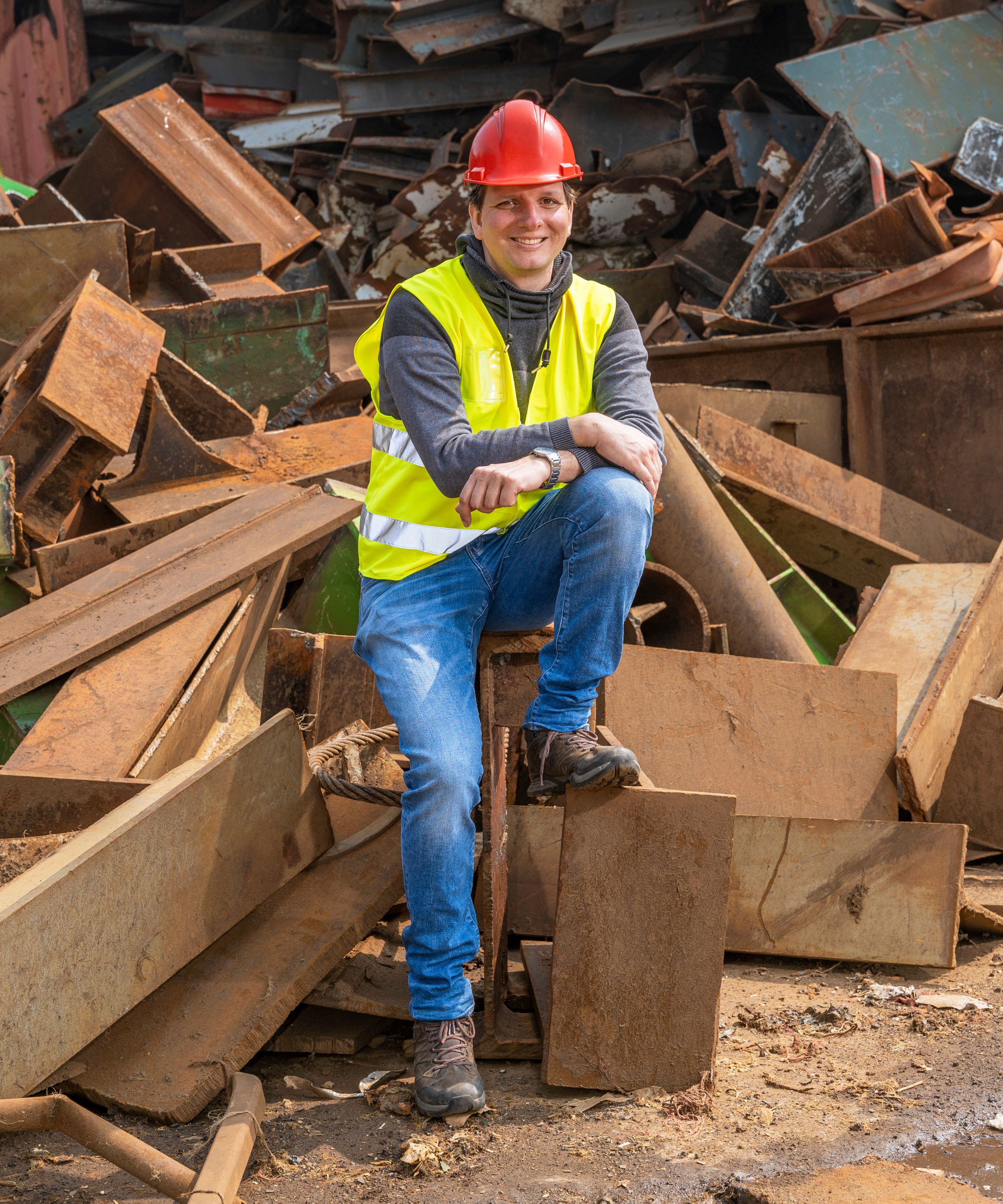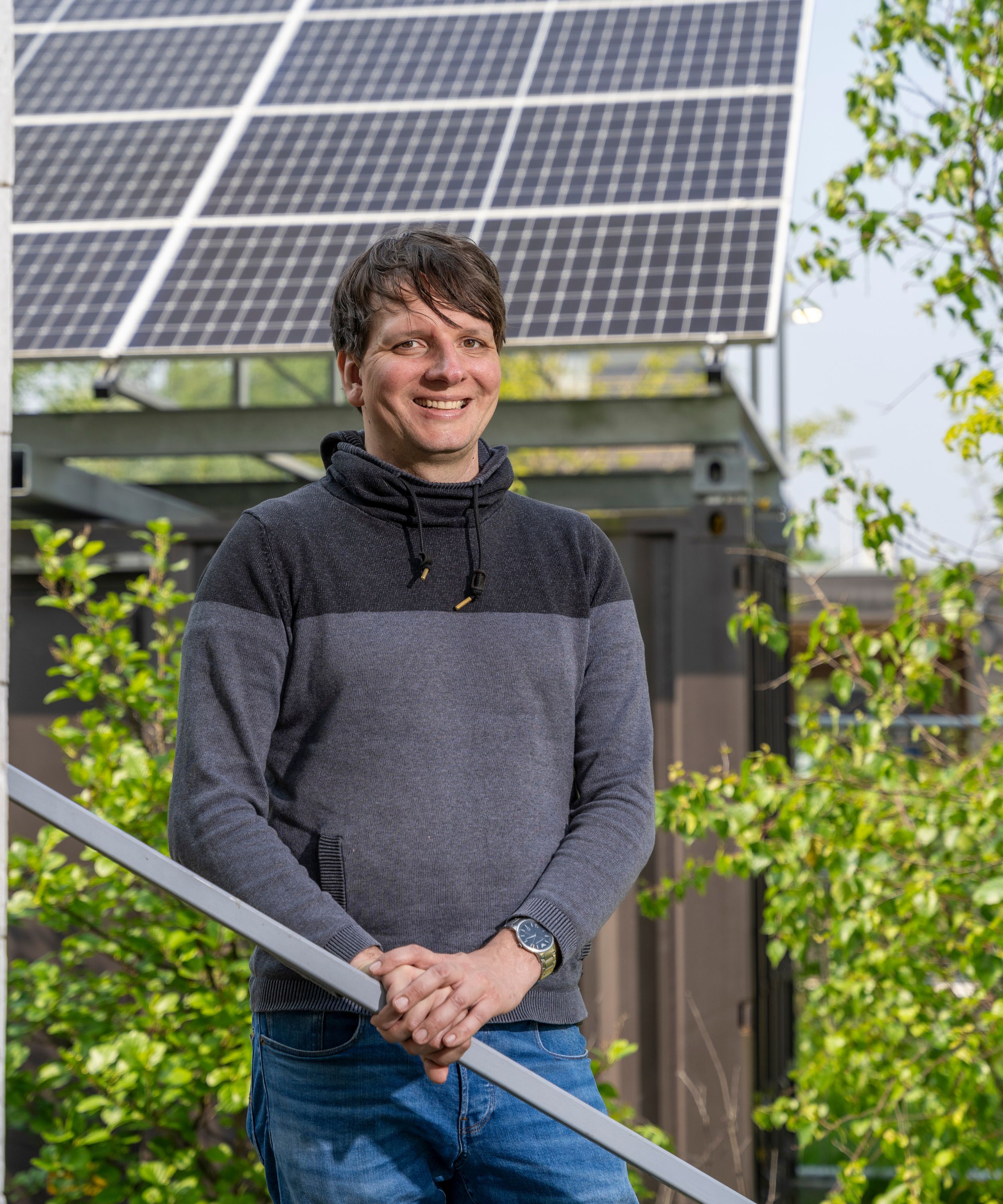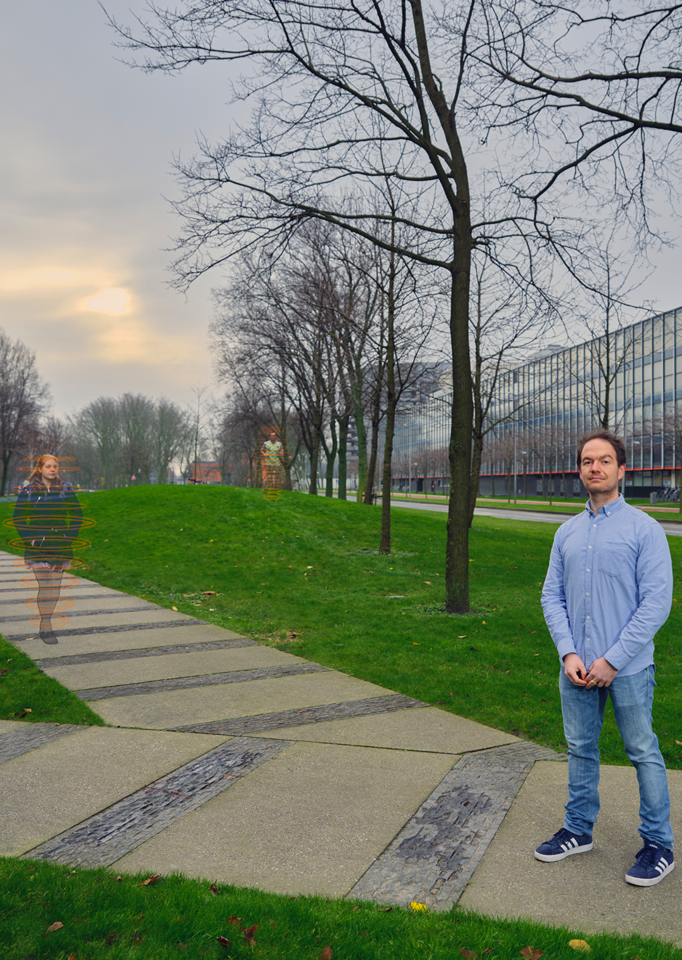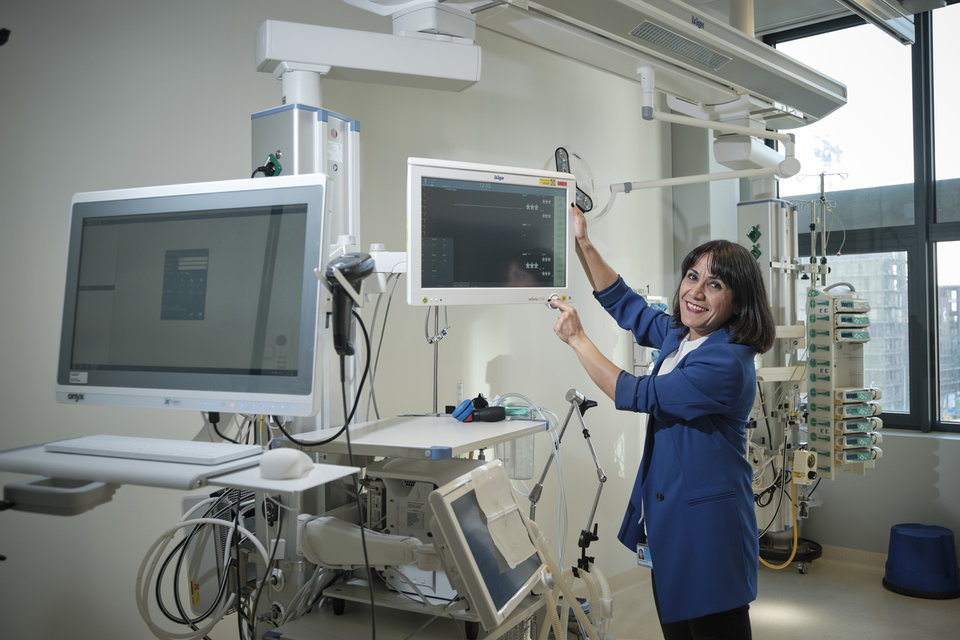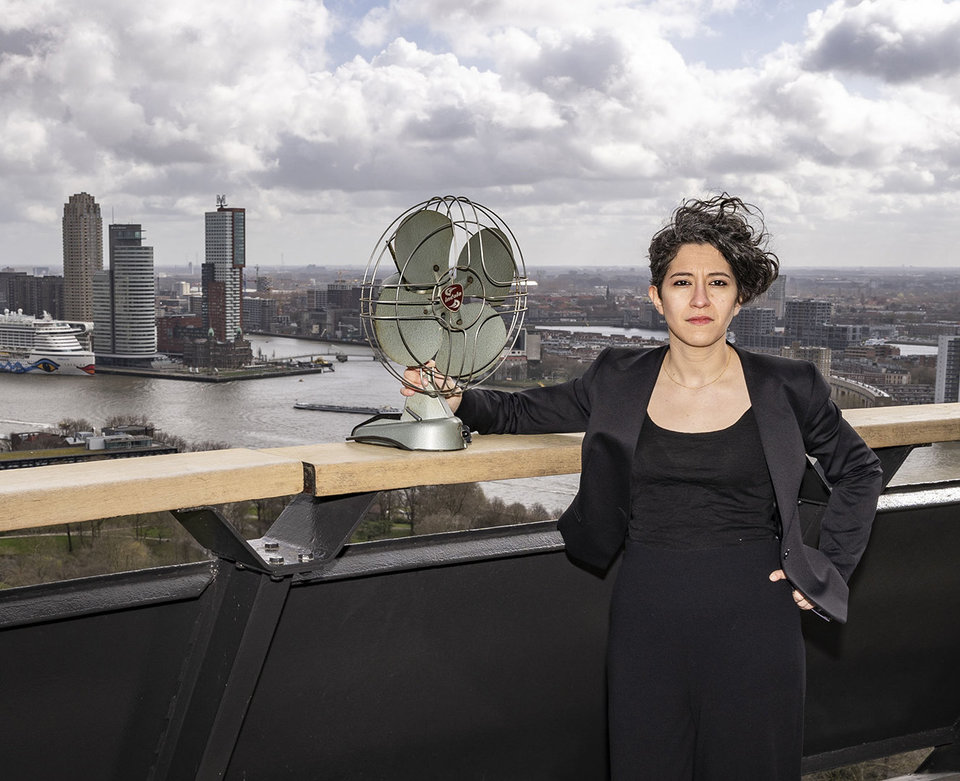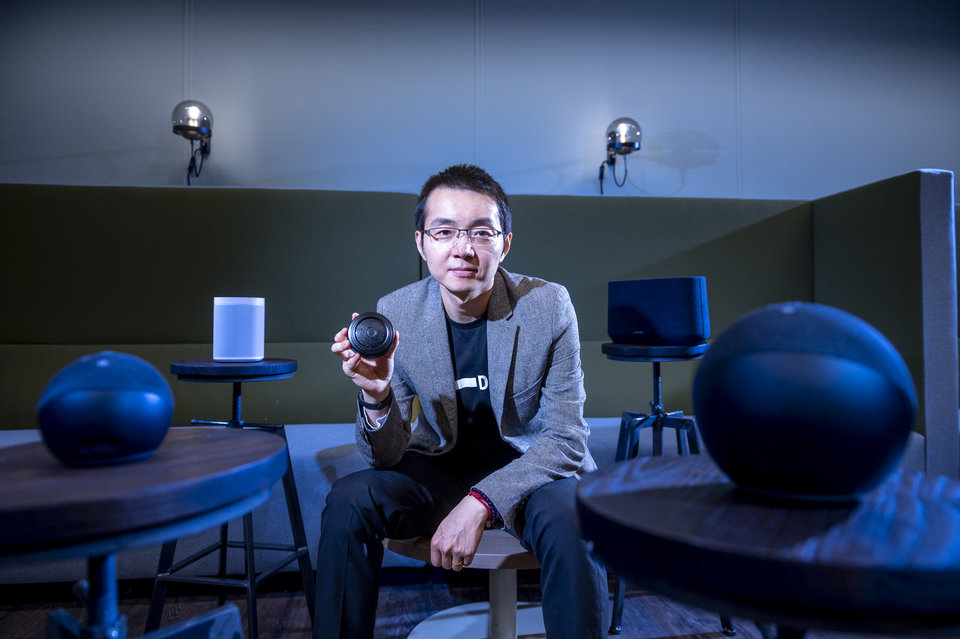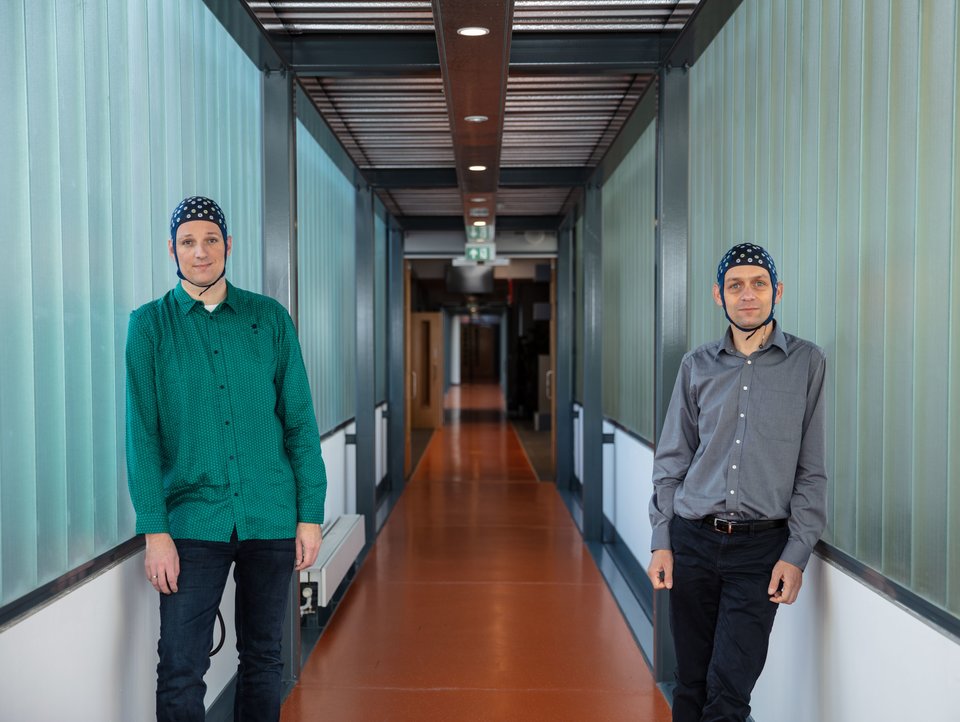The materials our earth supplies are not infinite. In fact, certain widely used materials are very scarce, with only a few countries able to source and process them – creating a dependency for other countries. These are called Critical Raw Materials. Coincidentally, these materials are used extensively in sustainable technologies. Silicon metal, for example, is used for solar panels. Researcher Malte Vogt wants to protect sustainable technologies from running out of resources: "I design circular solar panels. The goal is to mine the materials only once and use them to build first-generation solar panels for the energy transition and re-use the same materials again and again."
This century's most important energy source
Currently, solar energy provides around five per cent of electricity worldwide. "I think in the future it will provide about half of all electricity," says Malte. "It will be the most important energy source of this century."
Malte is part of the Photovoltaic Materials and Devices group at TU Delft and has a lot of knowledge on the development of solar energy. “The first silicon-based solar panels were built in the 1950s", he shares. And it took around seventy years to install one terawatt of solar panels worldwide – which is a trillion watts. "Actually, in the context of the energy transition, this is a very small amount," Malte explains. "By 2050, we want to achieve an energy system with zero CO2 emission, and for that we need to install about 10 times as much solar panel capacity per year as in any previous year."
That sounds like a lot, but the good news is that there is already exponential growth. In 2024 alone, around 0.4 terawatts of solar panel capacity was installed. "Since we are scaling up considerably, it is important that we now look at all materials in the solar panel production chain," says Malte.
Replacing critical raw materials
Making solar panels environmentally friendly may seem - at first glance - to be a natural fit for this industry, but that is far from the case. "We need to renew our energy system in the coming decades," explains Malte. People often think of recycling solar panels in this context, but that is only part of circularising solar panels.
"As part of the energy transition, we need to be sustainable not only in terms of CO2 emissions, but also sustainable in terms of material scarcity," Malte explains. The aim is to extract raw materials only once, use them to build first-generation solar panels to support the energy transition, and then continuously recycle these materials. "I think about this question: are there any materials we use in solar panels now that we need to replace?"
Silver is used extensively in the production of solar panels, and while the material is not officially on the list of Critical Raw Materials, solar panel production uses more than 10% of silver production annually. "I already indicated that we would have to produce ten times as many solar panels every year, so then we would end up using 100% of the annual silver production. That is clearly not the right way to go; we need to reduce the use of silver," Malte stresses.
Besides silver, silicon metal and tin are also used in solar panels. The replacement and recycling of tin is also the subject of extensive research within TU Delft. "Researchers have the technologies ready to replace these (near) critical raw materials," Malte explains. "We could replace silver with copper, for example, as copper also conducts electricity and is more widely available. However, we should not simply assume that the materials available today will be available in five years. Especially when the amount needed per year is ten times what is available now." A lot of planning and research goes into designing circular solar panels.
Upcycling not downcycling
In the EU and several other countries, it is mandatory to recycle solar panels. "But it is not sufficiently specified what recycling should entail exactly," Malte explains. Recycling includes shredding solar panels and using them as filler material in roads. This is a waste of the silver and other valuable metals used in solar panels. And it is even a waste of the glass as well. "Because the glass used in solar panels is very high-quality and very transparent glass, which is more expensive than window glass," Malte points out. "So the goal should at least be to reuse the glass from solar panels for windows."
Whether you can recycle a solar panel also depends on the materials used to make it. In particular, polymer, a transparent plastic used to glue a solar panel together, complicates the recycling process. Malte is working on several alternatives. Together with a colleague, he is researching a 'green' solvent that can dissolve the polymer layer without damaging the glass or solar cell, so that they can be reused. "You can actually think of it like a sandwich with cheese and tomato, which you put in the oven," he explains. "And afterwards you try to take the sandwich apart again, but without the cheese. That's what we hope the solvent does."
Malte is also working with a startup that wants to build solar panels without polymer. They are working on solar panels that use gas. "In this design, there is natural gas between the layers of the solar panel, which is pressurised. Polymer is then no longer needed. But the disadvantage of this design is that it needs an airtight edge seal."
If a country has no rules for solar panel recycling, it costs less than $1 to just throw it in a landfill.
Second-hand solar panels
"The lifetime extension of solar panels is also very important," Malte shares. When solar panels are very damaged, recycling is often the only option. But circularising solar panels also means reusing second-hand solar panels, or repairing solar panels. Using these circular methods has many advantages, for example less energy consumption and lower CO2 emissions.
"I would like to see that we could use a solar panel for 50 years," says Malte. "The current target lifespan of solar panels is 25 to 30 years, and there are certainly also examples of systems that have not worked that long. In Europe, roofs usually last about fifty years. It would be nice to have a similar time frame for solar panels."
Influencing policymakers
"If a country has no rules for solar panel recycling, it costs less than $1 to just throw it in a landfill," shares Malte with frustration. So that's what usually happens at the end of a solar panel's life. The big challenge in recycling solar panels is: how do I recycle when I don't know which materials are inside? And also: does the solar panel contain enough usable materials to make recycling worthwhile? Currently, there are no standards for the materials used in solar panels. Virtually any material can be used in the composition of solar panels. Malte would like to see this changed. "It is not the primary focus of my research, but I would like it if the societal consequence of my work is to influence legislators and policymakers." Malte is also collaborating on the FAIR-PV project to develop a product passport for solar panels. "This digital product passport would allow people to find out what materials are in solar panels and how best to recycle or repair them," he explains. But even with the passport, there are still obstacles along the road to recycling. Producers have to invest in the machinery and labour for recycling. The benefits of recycling are for the next generation of production. "It's really about an investment for the future," he says.
There are also policy challenges when it comes to reusing solar panels. Malte lists a few: "We need to define protocols to test second-hand solar panels, we need to build a market demand, and we need to build trust with the next user of the solar panels."
The magic happens when you have fun
Malte's radiates enthusiasm about his field - and the impact of his research. “I studied physics, so I enjoy solving physics-related problems. During my bachelor thesis I focused on gravitational waves and this was very interesting physics. But I realised that the many hours that I put into the research did not bring the satisfaction I expected. I also needed social impact. That's why I started focusing on solar energy during my master's."
Malte's passion for his work is infectious, and it shows in the collaborations and initiatives he develops. "Usually the magic happens and the ideas come when you really enjoy what you are doing. And also, if you have the right tools to solve the problem, and have some good colleagues around you," Malte explains. Research is all about collaboration and teams. "It's not one professor that changes the field. It is teams of scientists, and collaborations between universities in different fields that change it together.”
Of course, there can be struggles when it comes to research. “We are all human and we all make mistakes, and we all have our good and bad moments. I don't think it's healthy to try to be somebody else. That's something that I try to instil within my students: Just be yourself and go with your instincts. If there is a subject that keeps pulling on you, even though it doesn't fit exactly with your research goals; just go for it! Sometimes it leads to nothing, but sometimes it can lead to unexpected and great findings. That's really a driving force within our group.”
Last year, the Photovoltaic Materials and Devices group was part of the consortium that received the National Growth Fund grant together with some of the largest solar companies in the Netherlands. Additionally, the group is also working on Horizon Europe research projects. "I am collaborating with these companies and within these projects on research and will help them make their solar panels more sustainable and recyclable. We are working on the next generation of solar panels," he explains.
Materials Week
During Materials Week, which takes place from 13-17 May 2024, TU Delft will showcase its efforts in the area of Critical Raw Materials (CRM). The university's mission is to reduce dependence on other countries for these critical metals. In addition, we run up against planetary boundaries; through our research, we want to contribute to preserving the planet. This can be done, for example, with research into reusing and (better) recycling of these raw materials and metals, which is the wonderful work of Malte and colleagues.

